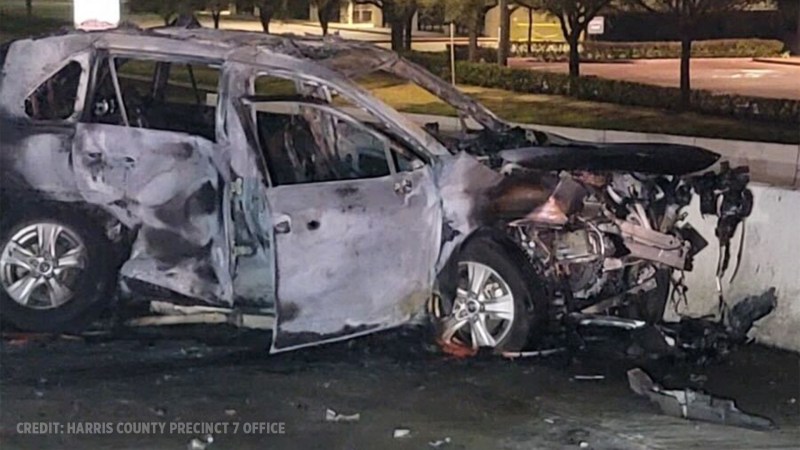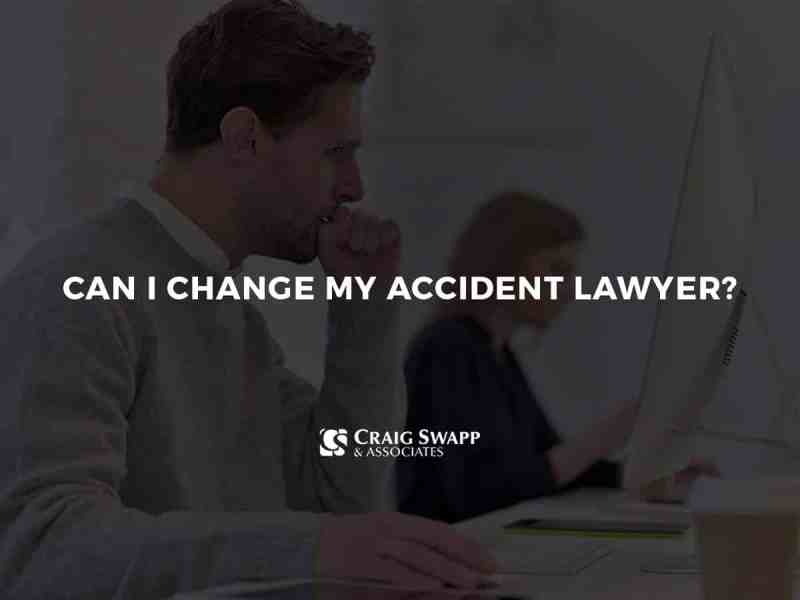What To Do When You Get In An Accident And It's Not Your Fault – When should you worry? What should you do if you think you have COVID-19? April 13, 2020 – Katie McCallum
As your symptoms begin to increase, so do your questions. Are you allergic? Is it cold? Is it the flu? What should I do if I think it is COVID-19?
What To Do When You Get In An Accident And It's Not Your Fault
Because there is so much overlap in symptoms, there are some preliminary investigations you can do to determine if your symptoms are caused by a cold, flu, allergies, or COVID-19.
Health Check: The Science Of ‘hangry’, Or Why Some People Get Grumpy When They’re Hungry
Note your specific symptoms and use the chart below to determine whether your symptoms are most likely due to COVID-19 or another common respiratory illness.
If your symptoms are similar to a cold or flu, use over-the-counter medications or home remedies to treat them. It may also be a good idea to stay home and avoid close contact with others to avoid spreading the disease. Lastly, because many of the symptoms of these upper respiratory infections overlap, there is no harm in getting a COVID-19 test at home if you have access to it.
If you think it’s an allergy, start by choosing the best over-the-counter allergy medication for you. And again, don’t be afraid to get tested for COVID-19 at home. Isn’t it better to be safe than sorry?
If you think you may have COVID-19, it is important to get tested. (Related: 4 Questions You May Have About COVID-19 Testing, Answered)
Heat Pumps: How Federal Tax Credits Can Help You Get One
If you have symptoms and have a negative result at home, we recommend confirming with this PCR test as indicated on the test label.
If you are unsure whether or how to get tested, you can get tested virtually from one of our board-certified health care providers through Houston Methodist Virtual Urgent. Our providers are available 24 hours a day, 365 days a year to find out if you need testing and advise you where to go.
Many people experience mild symptoms that can be treated at home with painkillers, cough medicine, rest and hydration. If you have further questions about your symptoms or need follow-up, we recommend that you visit your doctor. Need a phone number for a Houston Methodist physician? You can see it here.
Stay in touch with Houston Methodist all year long. Sign up to receive our e-newsletter with articles, videos, health tips and more. Concussion testing evaluates how well your brain works after a head injury. Most concussion tests include a questionnaire or symptom checklist. Concussion testing checks attention, memory, concentration, thinking speed, problem-solving skills, and more. It also tests your balance and coordination. Concussion testing is one of the tools used to diagnose concussions.
What Should I Do After High School?
Medical professionals, athletic trainers, and coaches use concussion testing to evaluate brain function before and after a head injury.
Cleveland Clinic is a not-for-profit academic medical center. Advertising on our website supports our goals. We do not endorse non-Cleveland Clinic products or services. Policy
A concussion is a mild traumatic brain injury caused by a stroke, violent impact, or blow to the head. The damage disrupts normal brain function. A concussion can also occur when a strong physical impact causes the head to suddenly rock forward, backward, or sideways.
The general rule is that concussions only occur when a person loses consciousness. In reality, most people who suffer a concussion do not lose consciousness. You, your child, or a loved one may have suffered a concussion and not know it. That’s why it’s important to get a checkup, even if you don’t think your head injury is serious.
How To Become A Teacher Without An Education Degree
Anyone who has experienced a blow to the head or a head movement that feels like a whiplash fracture should be checked for a concussion. Concussion testing examines cognitive abilities – the brain’s ability to think and process information – after a head injury.
Concussion testing is a useful tool to help medical professionals diagnose concussions. Early diagnosis allows for proactive planning and management of concussions. Repeated concussion testing can also help determine how well the brain recovers from head injuries.
There are several concussion tests. These can range from the very simple (usually performed by non-medical professionals) to the very sophisticated (performed by medical professionals). These tests use a combination of oral, written, or computer methods to test various brain functions.
There are several “name” concussion tests. Most concussion tests are a series of questions or a checklist of symptoms. Everyone has their own points system.
Malware: What It Is, How It Works, And How To Stop It
Some concussion tests are performed by athletic trainers, coaches, or sports medicine doctors. Other tests are self-report tests that you can complete on your own. However, there are also tools used by medical professionals, such as neurologists.
WARNING: The assessment tool is not a substitute for a medical diagnosis of your injury. Young athletes (under 18 years of age) who have suffered a concussion or are suspected of having a concussion should not return to sport on the same day. They should be removed immediately until your healthcare provider feels it is safe to resume sports. In all 50 states, it is against state law for athletes to return to practice/games without first being cleared by a medical professional.
People use the Standardized Concussion Assessment (SAC) test and emergency room testing to assess an athlete’s immediate mental state. This test tests an athlete’s orientation, immediate memory, attention, and delayed memory. The SAC takes approximately 5 minutes to complete. The exam questions are:
SCAT stands for Sports Consciousness Assessment Tool 5. Intended for use by ages 13 and older. In addition to the SAC test, this includes a neck and balance assessment, a yes/no symptom checklist, and other information about the injury and injury-related conditions. SCAT5 takes 15 to 20 minutes to complete. There is also a children’s version for children ages 6 to 12.
What To Do When You Can’t Get Pregnant
MACE stands for Military Acute Concussion Evaluation. This test collects information about the event, signs and symptoms of the injury and includes an informational version of the SAC test.
During this test, your eyes are closed and your hands are placed on your hips. The position is with your feet shoulder-width apart, one foot in front of the other, and one foot on your non-dominant leg. All positions must be held for 20 seconds.
Medical professionals use the Acute Concussion Assessment (ACE) tool. It includes questions about the presence or absence of a concussion, a list of 22 concussion symptoms, and risk factors that may prolong recovery. This form collects certain information including:
The Post-Concussion Symptom Scale (PCSS) is a self-report test that assesses 21 symptoms in terms of severity (from none to severe) at baseline and at various time points. Symptoms include physical, thinking, sleeping, and emotional functioning.
Pregnancy Ultrasounds: When And Why They’re Done
The Concussion Immediate Assessment and Cognitive Testing is a computerized test for athletes ages 12 and older. There are three parts to the exam.
This testing platform now includes a pediatric version as well as a rapid test for diagnostic testing in emergency rooms or emergency rooms.
Cleveland Clinic has developed a concussion mobile application for healthcare professionals assessing and managing concussions. After basic data collection, the C3 app is used to:
The C3 app compares an athlete’s baseline and standardized data on balance, information processing, reaction time, alignment, coordination and vision after injury.
How To Get Support If Youre Feeling Anxious About Your Sexuality
Although these tests can help identify a possible injury, you should see a doctor (if your doctor does not perform tests). Your health care provider or neurology team will also perform a complete exam, including balance and vision tests. Imaging tests, including an MRI or CT scan, may be ordered to check for brain damage or bleeding. There is also a blood test called the Brain Trauma Indicator. This blood test measures certain proteins in the blood that are released after a mild traumatic brain injury. The presence of these proteins may indicate cerebral hemorrhage.
This type of concussion testing is often performed on student athletes. Student-athletes who play contact sports typically undergo concussion testing before the season begins. This questionnaire measures general brain function in areas such as memory, thinking speed, and concentration. Computer exams are often similar to playing video games. If a player sustains a head injury at any time during the season, he or she will be removed from the game and re-examined. Current concussion test results are similar to previous season results.
Another simple tool is the lateral conditioning assessment. This test checks the brain function of the suspected athlete. Common questions include:
Please remember that players with a concussion or suspected concussion should never return to the game. This experiment provides some information. If the school does not employ a physician or sports medicine specialist, the athlete should be referred to a health official for further follow-up. Your health care provider may perform a complete physical examination and some tests, or refer you to a sports medicine specialist or neurologist for additional testing and imaging, if necessary.
Eczema: What It Is, Symptoms, Causes, Types & Treatment
First, you should know that only a medical professional can examine you or your loved one and order the tests necessary to make a diagnosis. But in some
What to do when in a car accident and not at fault, what to do after an auto accident not at fault, what to do in a car accident not at fault, if you get in a car accident and it's not your fault, what to do when in car accident not your fault, what to do after an accident that is your fault, what to do after an accident not your fault, what to do after a car accident not your fault, when you get into an accident and it's not your fault, what to do when in an accident not your fault, if you get in an accident and it's not your fault, what to do when you get in an accident and it's not your fault







